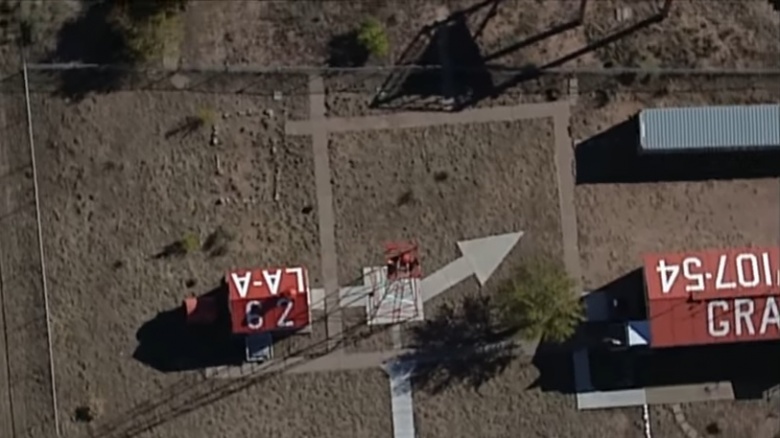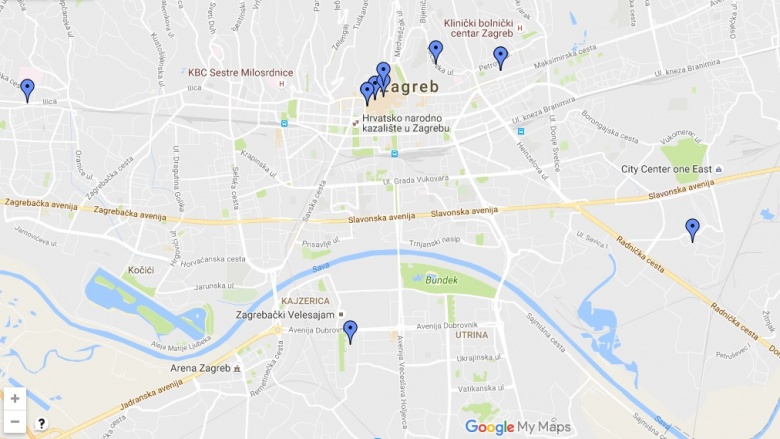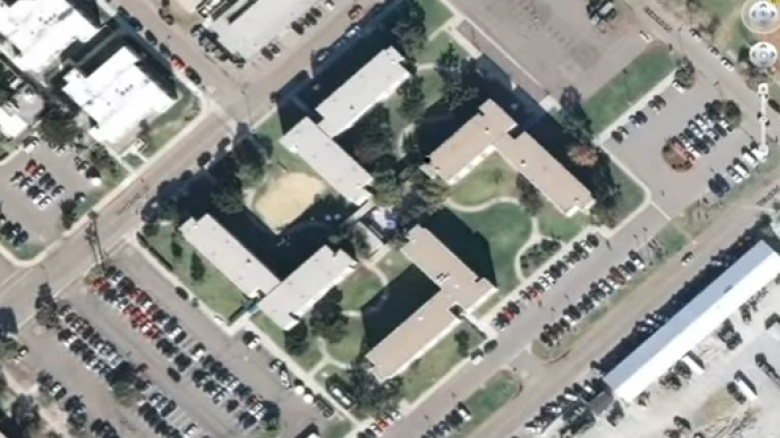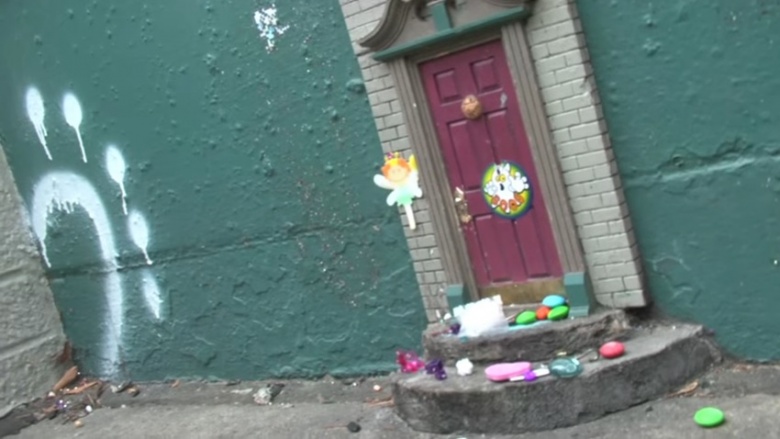The Most Unexpected Real-Life Easter Eggs
From secret codes to throwbacks, references, and inside jokes, Easter eggs are a great way to reward video game, movie, and TV fans for paying close attention and watching carefully for the unexpected. But did you know that you can also find Easter eggs in the world around you? That's right — architects, artists, and regular people have been secreting their own Easter eggs in the wilds of real life, as a reward for people who keep their eyes on their surroundings, instead of on their phones. Are you ready to level up your Easter egg game? Here's a few options you can start with!
Take it easy
When the Eagles released their first single—"Take it Easy"—back in 1972, they probably didn't know how impactful the song would eventually become, both in rock and in real-life. But as it turns out, there's a permanent reminder of the song's impact, in the actual town that they sing about.
If you're familiar with the opening lines of the song's second verse—"Well, I'm a-standin' on a corner in Winslow, Arizona"—you may want to slow down and do a double take next time you drive through Winslow. The town decided to take advantage of the song's popularity by creating "Standin' on the Corner Park," situated on the corner of Old Highway 66 and Kinsley Avenue in downtown Winslow. Today, thousands of nostalgic fans make the pilgrimage to Winslow each year to pose with the statue just standin' on the corner, and admire the mural of a Winslow storefront, complete with a pretty girl ("my Lord") in a flat-bed Ford, who is reflected in the glass.
In addition, if you come during the right time of year, you can even enjoy the annual "Standin' on the Corner Music Festival," which happens every September. That is, if you're not Already Gone by then (last Eagles pun, we swear).
Concrete arrows
During the 1920s, the U.S. Postal Service created the first airmail system, called the Transcontinental Airway System. This allowed pilots to navigate across the country in an era before radio guidance and radar were common. Every few miles, beacon towers were built to guide the way for intrepid airmail pilots, including a 50-foot tall lighthouse-style tower with a rotating 1000 watt light. In cases of poor visibility, however, the beacons included dummy-proof backup: brightly painted yellow concrete arrows—up to 70 feet in length—which pointed the pilot directly to the next beacon, and which were visible from up to 10 miles in the air.
By the 1930s, radar navigation had become the common method used by airmail pilots, and the beacon towers began to fall into disrepair. Similarly, many of the arrows were torn up to prevent enemy pilots from using them to navigate across the country. But many remain. Cracked, chipped, and faded, few look like what they did in their heyday, but they're still there for any intrepid explorer who wants to check them out in person.
If you'd like to check them out yourself, a few aviation buffs (and arrow-lovers) have compiled lists and maps of the original beacon locations. There's even a project to catalog and visit the beacon locations to determine if they're still there, so check that out if you want something to do on your next cross-country trip, besides eat and be lost.
Grounded solar system
If you ever visit Zagreb, Croatia, be sure to check out this planetary Easter egg, which many residents of the town aren't even aware exists. In 1971, Croatian artist Ivan Kozaric built a large bronze sphere he called the "Grounded Sun." Since 1994, the sculpture has resided in the middle of Zagreb's Bogoviceva Street, and a decade later, artist Davor Preis built planetary models to scale with the Grounded Sun, and secretly placed them in positions around Zagreb, which are in relation to their actual distance from the Sun in our solar system.
His "Nine Views" installation features all of our solar system's major planetary bodies, including Pluto—which became a dwarf planet in 2006, but art doesn't listen to science and so it remains. A group of Croatian physics students eventually tracked down all of Preis' planetary sculptures, which you now can visit at your convenience with the help of this map.
An aerial view
In China, one video game company CEO decided that a standard boxy office building was too bland for his growing team of developers. So when they needed a new location, he enlisted an architect to create the ultimate work environment—an office building that resembles the USS Enterprise from Star Trek. From the warp drive engines to a separate saucer section, this building is such a dead ringer for the fictional spacecraft, its generated its own tourist trade as an attraction for local and world-traveling Trekkies.
This isn't the only architectural Easter egg, either—many other buildings around the world have been cleverly designed to resemble something else from the air. The Rock and Roll Hall of Fame's main building, for example, is a glass pyramid, but when viewed from the air, you realize the courtyard in front of the museum was constructed to look like a giant record player. Then there's southern California, where one building on a Naval base looks like a swastika from the air. This might be offensive, until you realize that neighboring buildings resemble WWII-era bomber planes, which are pointed directly at the Nazi symbol, as if they were attacking it. The Navy claims the design was an accident, and actually spent more than $600,000 to hide the shape which, awesome bomber PR or no, was probably the right movie.
Nerdy gargoyles
You can find decidedly out-of-place, and supremely dorky, gargoyles and grotesques dotting some of the world's most historic churches and other buildings. Darth Vader's head graces the upper reaches of the National Cathedral in Washington, D.C., and an Aliens xenomorph can be seen clinging to the side of Paisley Abbey in Scotland. The Cathedral of Salamanca got a space-age addition during a renovation in the '90s: a spacewalking stone astronaut now floats among the leaves and vines on the side of the building. The Salamanca Cathedral's astronaut has some company—another grotesque on the building depicts a smiling demon holding an ice cream cone.
Perhaps the most geeky grotesque collection of all, however, belongs to the Chapelle de Bathléem near Nantes, in the Pays de la Loire in France. During a renovation in the '90s, a stonemason was brought in to replace many of the chapel's missing grotesques. His inspiration was clearly drawn from popular culture and science fiction, as close observers have spotted a xenomorph, characters from the movie Gremlins, and even a manga robot.
Where's Mickey?
Architects, ride engineers and interior designers of Disney parks have been sneaking America's favorite mouse (and his best buddies) into all sorts of unexpected places. It's become something of an obsession among Disney fanatics to locate all the hidden Mickeys, Donalds and Goofys—which can be seen on rides, in the walls, and even woven into the carpet. There are multiple fan websites dedicated to finding and listing every single hidden character—which now number more than a thousand.
There's one other Disney Easter egg that is equally fun—but you may have a hard time spotting it if you aren't a child. A sculpture of Cinderella at Disney World has a hidden design on the wall behind her. If you're an adult, you may not notice it at first, but if you're a child—or if you give the princess a proper, deep-enough curtsy—a crown in the wall's design is perfectly placed above the lovely Cinderella's brow.
Don't push the button!
Who can resist the urge of an ominous red button? That's the question one artist tried to answer with his art installation in Houston. Along Preston Street, overlooking the nearby Buffalo Bayou, artist Dean Ruck left a red button secreted into a brick pillar. Pedestrians brave or curious enough to see what it does are in for quite a surprise—after pressing the button, a large bubble emerges from the adjacent bayou, churning the waters and pushing air up to the surface. Pretty fun, right? In addition to being fun, the button also serves a purpose—the bubble aerates the waters of the bayou, providing oxygen to the plants and organisms that live there. So it's not just a silly button, it's also a lifesaver!
Ann Arbor fairy doors
All across the city of Ann Arbor, MI, an observant visitor may begin to notice tiny doors in very strange places. These Fairy Doors—part of an art installation gone rogue—can be found all over the college town. The first public fairy door was spotted in 2005 outside Sweetwater's Coffee and Tea, and more soon began popping up all over town. As befitting something magical and mysterious, the doors may disappear for a time, only to reappear later, or appear in a different location. Want to take a tour of Ann Arbor's fairy doors? We've got you covered.
Crafty Easter eggs
Sometimes, the best Easter eggs are those you create yourself. Austin, Texas resident "Ez," for example, spices up the geocaching scene around his city by placing totally awesome Legend of Zelda-themed goodies at his geocaches. He builds wooden "treasure chests," and fills them with Zelda artwork and other prizes, before secreting them in the wilds for other geocachers to find and enjoy. No grappling hook though, sorry.
You can find all sorts of neat stuff where you least expect it, left there by your fellow humans for you to find. Reddit user /u/roobomatic leaves all sorts of ceramic pottery pieces for hikers to find along the Florida Trail: "If you are hiking and see a clay pot, or a cup or vase or jug — feel free to take it home with you. Congratulations for taking the long hike and having a keen eye along the way, traveler." Thanks, roobomatic!
Crafty knitter and crocheters have also embraced a similar movement, called "yarn bombing"—leaving scarves, hats, and other winter clothing items they make for the homeless, or for anyone else who needs them. Groups like Scarves in the Port City and Chase the Chill tie their creations around trees and signposts, or they place them in bus stops with handwritten tags letting people know that, "I am not lost! If you are stuck out in the cold, please take this to keep warm!"
The Toynbee Tiles
Back in the 1980s, residents of Philadelphia, Boston, and other towns in the Northeast began to notice interesting plaques glued to their city's roads and crosswalks. The plaques—which have since become known as "Toynbee Tiles"—contain cryptic messages about British historian Arnold Toynbee, the planet Jupiter, resurrecting the dead, and Stanley Kubrick's movie 2001: A Space Odyssey. Since then, the tiles—which are made from linoleum, asphalt glue, and tar paper—have been spotted in cities all over the country and even in other countries, presumably placed by copycat artists.
What does the inscription, "TOYNBEE IDEA IN MOViE `2001 RESURRECT DEAD ON PLANET JUPITER" mean? Who makes these tiles, these Easter eggs? Writer Justin Duerr and director Jon Foy explored the mystery surrounding the Toynbee Tiles, and give some tantalizing clues about their creator in the 2011 film, Resurrect Dead: The Mystery of the Toynbee Tiles. Spoiler alert: they dunno, but it sure is fun to guess.




